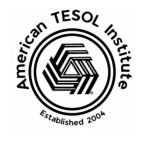June 5 marks World Environment Day, an initiative spearheaded by the United Nations Environment Program (UNEP) to inspire global awareness and action for environmental protection. As TESOL educators, this day provides an excellent opportunity to integrate important environmental themes into your English teaching curriculum, fostering both language acquisition and environmental consciousness among students.
What is World Environment Day?
Established in 1972, World Environment Day is celebrated annually to encourage global communities to take meaningful actions toward preserving the planet. UNEP (United Nations Environment Program) plays a pivotal role in organizing events, sharing resources, and mobilizing individuals and governments to address pressing environmental issues. The day’s overarching goal is to inspire nations and people to improve their quality of life through sustainable practices and partnerships.
Each year, World Environment Day focuses on a specific theme, such as climate action, biodiversity conservation, or pollution reduction. These themes align with UNEP’s mission of empowering individuals to create impactful change through awareness, education, and collaboration.
Why Should TESOL Teachers Incorporate World Environment Day?
- Global Relevance: Environmental issues are universal, making them relatable and engaging topics for ESL learners from diverse backgrounds.
- Language in Context: Teaching English using real-world issues enhances comprehension and retention as students engage with authentic materials and vocabulary.
- Critical Thinking: Discussing environmental challenges encourages students to think critically, articulate opinions, and propose solutions in English.
- Cultural Awareness: Exploring environmental practices in various countries enriches cultural understanding and fosters global citizenship.
Teaching Ideas for World Environment Day
Here are practical and creative ways to integrate World Environment Day into your TESOL classroom:
1. Vocabulary Building
Teach essential environmental vocabulary such as “sustainability,” “biodiversity,” “renewable resources,” and “carbon footprint.” Use flashcards, matching games, and word maps to make the learning interactive.
2. Reading Comprehension
Provide students with short articles or infographics about UNEP and World Environment Day themes. Assign comprehension questions to improve their reading skills and encourage class discussions about the content.
3. Debate or Discussion
Organize a classroom debate on topics such as:
- “Plastic bans: Are they effective?”
- “Should governments enforce stricter environmental laws?” This activity builds confidence in speaking, introduces persuasive language, and fosters critical thinking.
4. Writing Activities
Ask students to write an essay or a letter addressing environmental challenges in their community. For example:
- “Write a letter to the mayor suggesting ways to reduce waste in your city.”
- “Describe how your family can reduce its carbon footprint.”
5. Hands-On Projects
Incorporate project-based learning by having students:
- Create posters about environmental issues and solutions.
- Develop short presentations on how UNEP’s work has impacted their country.
6. Multimedia Integration
Use videos, podcasts, and TED Talks about environmental topics to improve listening skills. Encourage students to summarize the content or discuss their perspectives.
7. Community Action
Encourage students to participate in local environmental initiatives, such as tree planting or community clean-ups, and then write or speak about their experiences in English.
Fun Facts About World Environment Day
- The Host Country Changes Annually: Each year, a different country hosts World Environment Day, focusing on issues most relevant to their region.
- The First Celebration: The first World Environment Day was held in 1974, with the theme “Only One Earth.”
- Billion Tree Campaign: In 2006, UNEP launched a global initiative to plant one billion trees. By 2009, over 7 billion trees had been planted!
- UNEP’s Headquarters: UNEP is headquartered in Nairobi, Kenya, making it the first UN body with its base in a developing country.
How TESOL Teachers Can Make an Impact
- Inspire Change: Use World Environment Day to empower students to take small but meaningful actions, such as recycling or reducing energy consumption.
- Global Classroom: Highlight how environmental issues affect different countries, fostering a sense of shared responsibility among students.
- Partner with UNEP Resources: Leverage UNEP’s educational materials and campaigns to enhance your lesson plans and stay aligned with global initiatives.
Takeaway
World Environment Day is not just a day of awareness but a call to action. By incorporating environmental education into your TESOL curriculum, you can equip students with the language skills to express their concerns and solutions while fostering a deeper understanding of global issues. Together, TESOL educators and students can contribute to creating a more sustainable and interconnected world.



